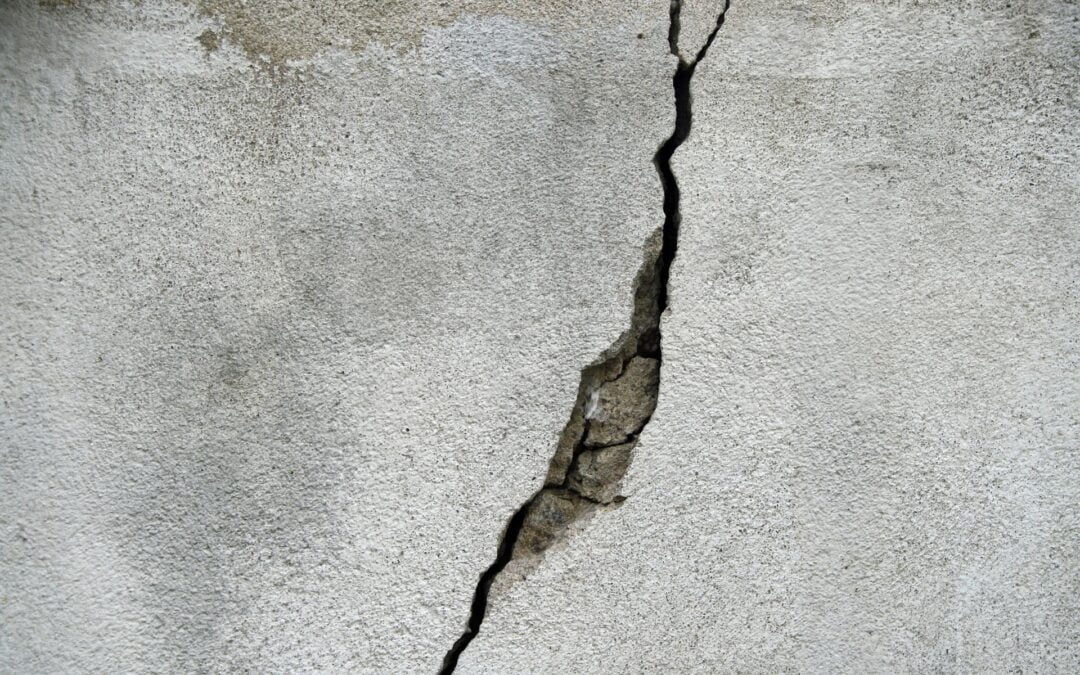Cracks in concrete can be a common issue for homeowners and property owners. Whether it’s a small hairline crack or a larger, more severe one, it’s important to address these cracks as soon as possible to prevent further damage and ensure the longevity of the concrete. This blog will guide you through repairing cracks in concrete, from assessing the severity of the cracks to applying the appropriate repair material and finishing the repaired area.
To repair cracks in concrete, assess their severity first. Examine size, depth, and if they are structural. Next, prepare the surface by cleaning and removing debris. Follow these steps to restore strength and durability effectively. Let’s get started.
Let’s look at those cracks and see how bad they are.
Assessing the severity of cracks is of utmost importance when determining the appropriate repair method. It is essential to understand that hairline cracks, which measure less than 1/8 inch wide, are typically superficial and can be quickly resolved using a crack filler. Conversely, cracks wider than 1/8 inch may indicate more serious problems, such as structural damage or issues with the foundation.
In cases where there is uncertainty about the severity of the crack, it is always advisable to consult with a professional. Their expertise will help you avoid exacerbating the problem and potentially causing additional damage. Seeking professional advice is a proactive step towards safeguarding your property and ensuring the longevity of the repairs.
After the assessment, prepare the concrete surface for repair:
- Remove loose debris, dirt, and old sealant from the crack using a wire brush or chisel.
- Vacuum the crack to remove any remaining dust or debris.
- Widen the crack to a minimum of ¼ inch and deepen it to at least ½ inch using a chisel or grinder.
- Clean the crack again to remove any loose debris.
- Ensure a clean and dry surface for the repair material to bond to.
To ensure a successful and long-lasting fix, you’ll need to carefully consider the best method for restoring your damaged surface.
Choosing the right repair method for cracks in concrete is crucial for a successful and long-lasting fix. Two common methods are epoxy injections and concrete patching compounds. Epoxy injections are effective for narrow cracks and provide a strong bond, while concrete patching compounds are versatile but may need to be stronger. Consider factors like crack size, severity, appearance, and budget, and consult with a professional if needed. Choosing the appropriate method can restore your concrete surface effectively and enhance its functionality and aesthetic appeal.
To apply repair material to damaged concrete, you can start by thoroughly preparing the damaged surface, cleaning it, and removing any loose debris or particle.
- Prepare the surface by cleaning it thoroughly and removing loose debris.
- Use a wire brush or broom to remove dirt and dust.
- Use a power washer to remove stubborn stains or grime.
- Allow the surface to dry completely before proceeding.
- Choose the appropriate repair material based on the size and severity of the cracks.
- use a patching compound applied with a trowel or putty knife for small cracks.
- use a specialized repair material like an epoxy injection for larger cracks.
- Follow the manufacturer’s instructions for mixing and applying the chosen material.
Once the concrete repair material has been applied, it is time to put the finishing touches on the repaired area by sealing it to protect it from future damage.
Finishing and sealing the repaired area is crucial in the concrete crack repair process. It protects the repaired area from future damage and enhances its overall appearance. Following the proper steps and using the right materials ensures that your repaired concrete remains strong and durable for years.
Don’t let cracked and damaged concrete compromise the safety and aesthetics of your property. Gatlinbyrd Cement, a trusted concrete company, is here to help. Our skilled concrete contractors specialize in providing comprehensive concrete services, including expert crack repair solutions. Whether you need assistance with small hairline cracks or more extensive concrete issues, we have the expertise and high-quality materials to restore your surfaces to their former glory. Get in touch with Gatlinbyrd Cement today and let us help you maintain the strength, durability, and visual appeal of your concrete through our reliable concrete services. Contact us today!
Frequently Asked Questions
What's the first step in repairing cracks in concrete?
The first step is to assess the severity of the cracks to determine the appropriate repair method.
What's the difference between hairline cracks and wider cracks?
Hairline cracks are typically superficial and can be resolved with a crack filler, while wider cracks may indicate structural issues.
Why is it advisable to consult a professional for crack assessment?
Professionals can provide expert advice to avoid exacerbating the problem and ensure effective repairs.
What are the common repair methods for cracks in concrete?
Common methods include epoxy injections for narrow cracks and concrete patching compounds for larger cracks.
How should one clean the damaged concrete surface before repair?
Use a wire brush, broom, or power washer to remove dirt, dust, and stubborn stains or grime.
What are the steps for applying repair material to damaged concrete?
Clean the surface, choose the appropriate material, apply it with a trowel or putty knife, and follow manufacturer instructions.

